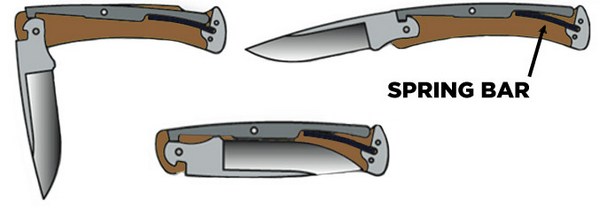Knife Operating Mechanisms
There a many different locking mechanisms on folding pocket knives, with many more being developed each year. The most common include: Slip joints, back locks, liner locks, frame locks, axis locks, & plunge locks. The goal of this website is to help you understand how each those locking mechanisms work, along with giving you an understanding of "Knife Anatomy".
Parts
Different knives are made with different parts. That said, there are still some universal pieces that are found on at least 99% of pocket knives out there. Let's start with the scales. The scales of a knife are the pieces attached to the internal frame, & provide a nice look &/or structure to the knife. Next is the blade, which I mean... Come on, you should know this. It's the cutting part. Finally, there is the backspacer, which is just a piece of metal or plastic that is sandwiched between the frame, providing enough space for the blade to close properly.Slip Joints
Slip joint knives are knives that don't have a locking system. They are simply held into place by the friction. Although this sounds dangerous, it's pretty safe. The most common slip joint knives include the Swiss Army Classic SD.
Back Locks
Backlock knives are very common, & very reliable. They work by pressing a button, which is actually part of a lever, which releases the blade allowing it to fold shut. Usually, lockback knives are associated with "old school" knives that your grandpa would carry, but many companies still use this system for its reliability today. Common examples of lockback knives are the traditional Buck 110, or the newer Spyderco Manix 2.